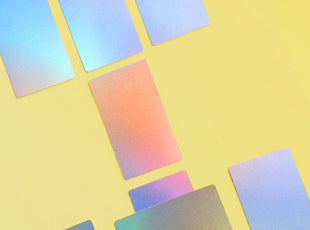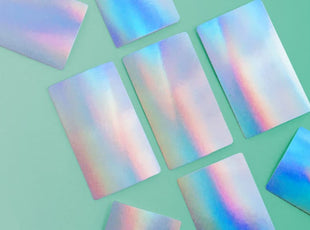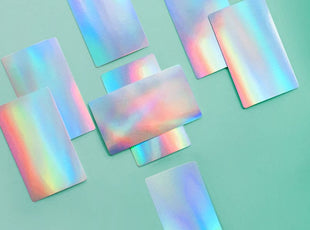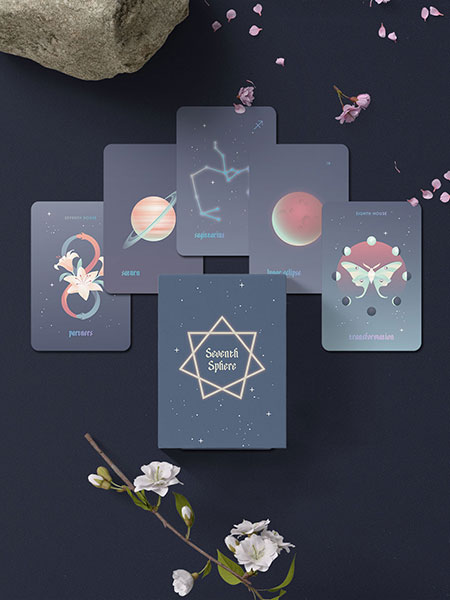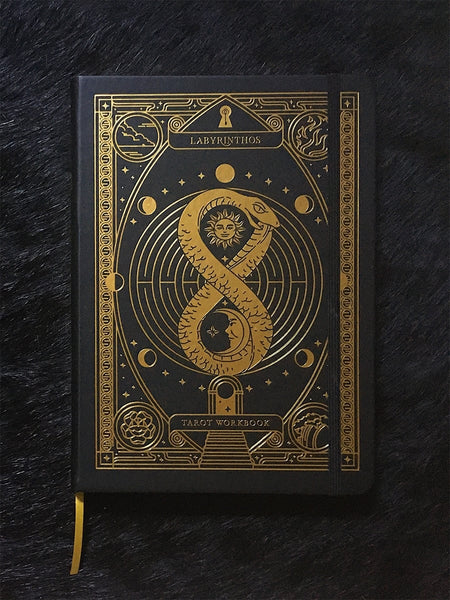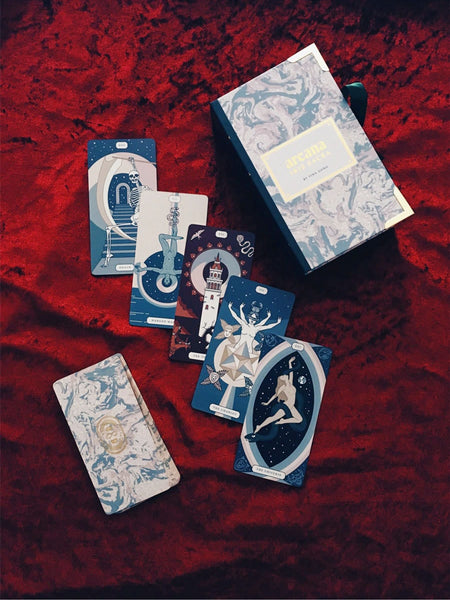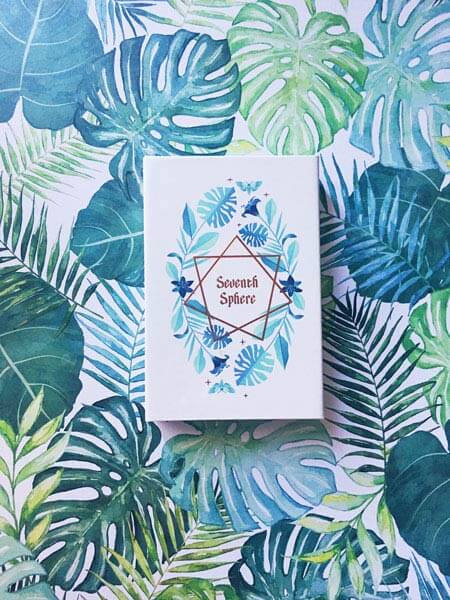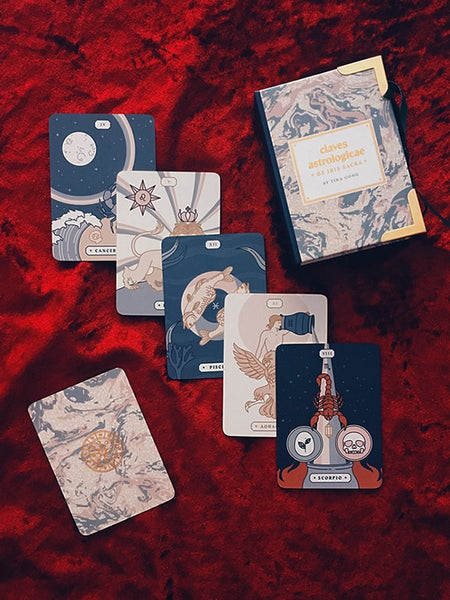✦ ✦ ✦
Carl Jung and Jungian Archetypes in the Tarot: The Various Aspects of Our Selves
Published
Though Carl Jung, one of the founders of analytical psychology, had never directly mentioned the tarot in any of his works, it’s easy to find links between the concepts that he built and the tarot. One of his greatest contributions to the theory of the psyche is was that of the archetypal images and the collective unconscious, which is the foundation from which the tarot draws upon.
Though I had always been drawn to the tarot since childhood, I never really understood how it worked or why until I came upon Jung’s work much much later in my life. His writings gave a legitimacy to the practice that I wasn’t able to find elsewhere. I will be the first to admit that I’ve never really believed in tarot as a divination tool - which was the way that tarot was always sold to me. But looking at tarot from a very jungian, symbolic point of view really made sense, and it opened a lot of doors for me in understanding myself.
Tarot, the Language of the Collective Unconscious
The collective unconscious was the name that Jung gave to the wellspring of symbols and archetypes from which we derive human narratives.

For example, almost every one of us meets a mother figure somewhere along our lives, and we see this figure repeat itself across multiple stories, legends, myths - and even movies, tv shows, etc. Though this archetype may not necessarily look the same for everyone (it can appear in many forms, not necessarily even female), the relationship between you and the archetype is essentially the same: someone who is caring, loving, and nurturing of your emotional needs, who helps you grow and love. We see aspects of this character everywhere in various cultures: Durga, Gaia, Hathor, Mary etc.
The idea here is that our psyche is filled with these archetypal images, and they structure how we tell stories and think about our lives. Let’s take a look at how these archetypes play out within the tarot, and specifically, the Major Arcana. I'm using some images from an upcoming deck that is going to be released, the Luminous Spirit Tarot, whose samples are coming in the mail super soon! Hopefully this serves as a sneak peek of some of the cards!
Anima and Animus
When combined, the anima and the animus are mean to represent a union, a whole, a complete self. Jung believed that every human has within them “feminine” and “masculine” aspects to their character. Part of having a balanced psyche is to acknowledge, understand and accept both “feminine” and “masculine” aspects.
I think it’s important here to bring up one thing - though the anima and the animus are traditionally associated with the sexes, they are essentially a set of qualities that are really gender-neutral. We all have different balances of the anima and animus within us, and whatever balance that we are most comfortable with, and feel the most ourselves with, is absolutely fine! This is the same approach that I take to the Queens / Kings dichotomy within the court cards. They are all mirrors of our own selves at different points in our lives. Though I identify as a cis-gender female, I can also identify with some aspects of a king, as well as other aspects of a queen, etc.

The Lovers - representing union, a coming together of opposites and dualities.
The World - the energies from this card are similar to that of the lovers, but on a larger scale, the union that is not just between two parts, but all.
In this Post: Luminous Spirit Tarot
Holographic, minimalist deck. Companion app focused on moon phases included.
Anima
The anima is the “feminine” aspects of our character - and like the animus, can have both positive and negative manifestations. Think also of the reversed and upright versions of the queens, specifically the queen of wands - they can be fiery and passionate, and this can manifest as someone who is radiant with energy, or also as someone who is wrathful or jealous.

The High Priestess - we see in her a Sophia, or a feminine archetype that radiates wisdom and understanding.
Strength - as opposed to purely physical strength, this card is more about inner strength and perseverance.
The Empress - nurturing and loving, she is representative of the mothers, the caretakers.
Animus
The animus is the “masculine” aspects of our character. On one hand, he is representative of our need to observe, sense, and form categories, structures and logic in our lives, versus the intuitive and deep emotional understanding of the anima. In other versions, we see them as the wise old man archetype who helps lead the way to ourselves.

The Hierophant, The Hermit - the wise old man archetype we see as a spiritual guide.
The Emperor - whose power creates structures, systems, laws, and rules, representative of the fathers we have in our lives.
The Persona
The persona is known as the face that we show to the world. It is how we present ourselves to others and how we want to be known and what role we want to play in our society - for example: an artist, a scholar, etc. Jung believed that healthy individuals were able to be quite flexible in the persona that they attach to - in that they understand the multiplicity and varied versions of the self.

The Magician - one who is the master of taking charge, to transform inner thoughts to outer manifestations. Like the magicians of today, he is the master of producing change by altering perception.
The Shadow
This is the part of ourselves that we reject - aspects of ourselves that we would like to remain hidden. In other words, we are all jerks sometimes, but it’s hard to accept that. When we don’t accept it, it becomes detached, like another being that we hate, and detest. Shadows are the archetypal foundations for monsters, demons, evil, the works. A part of becoming a mature person and society is understanding the darker aspects of ourselves, not rejecting them.

The Devil - like the shadow archetype, the more you ignore him, the more chained to his whims you’ll be.
Death - the way we react to this card is similar to how we react to the shadow, with fear. It is a universal human shadow - the shadow that follows us from the day that we are born. We all choose not to think about him, but in many senses, understanding that we all die is a transformative moment that shapes how we choose to live.
The Self
It’s a little hard to describe what the self really is in Jung’s world - but in summary, you can think of it as a unification of all the archetypes that we just listed. Jung believed that as children, we were almost unconsciously whole, but as we grew up, we fragmented and our journey in adulthood is to find that wholeness again. That process was called individuation.

The Fool - the wide eyed innocence from which we face the world. It’s no coincidence that the self represents the beginning of the major arcana. We were born with mental wholeness, that we lose and regain through our lives.
The World - a return to the wholeness that we experienced as a child. The fool integrates with every character he meets, and becomes the sum total of all of them.
What other Jungian Archetypes can you see in the Tarot?
Anyway, I hope you all thought this brain dump was helpful. But what about you guys? What other tarot cards do you find are representative of archetypes? If you’re all interested I might do another post with more details!
2 comments
-
RoseThank you for this breakdown! This is just the type of helpful intro to Jungian archetypes and the tarot I was looking for :-)
-
Nancy PianfettiAs a follower of Jung myself I found your article very enlightening. I sometimes struggle with the Court Cards but found your explanations and connections to the archetypes easy to comprehend. I would love to hear more about how you connect the Jungian philosophy to the Tarot cards. I find it fascinating and relatable for me. Thank you.
